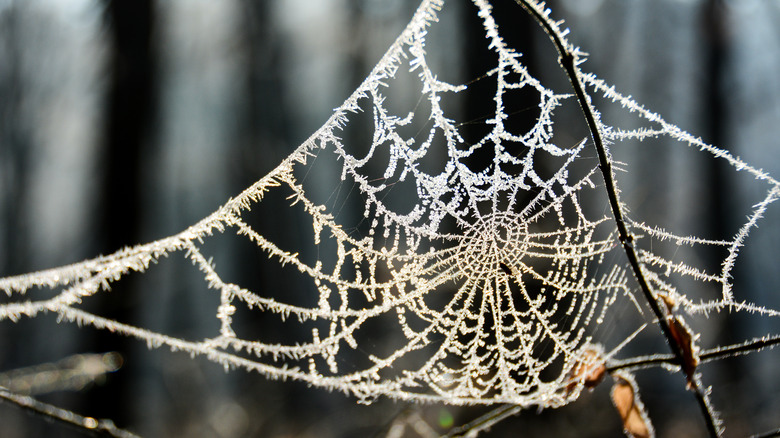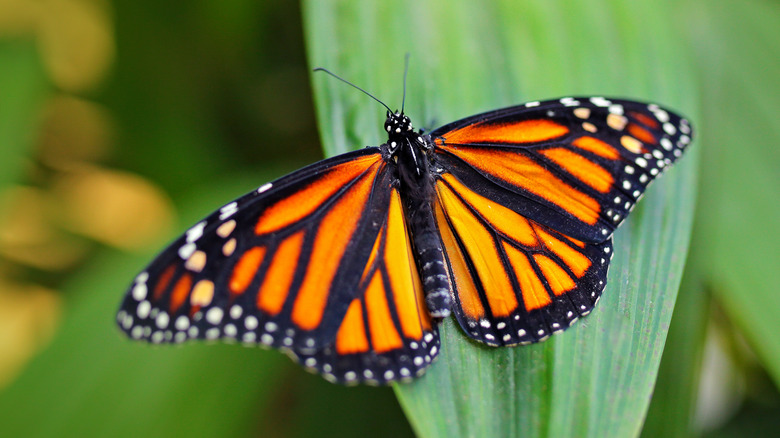What Happens To Bugs In The Winter?
It would be fair to say that lots of us are animal lovers. The American Veterinary Medical Association reported in 2018 that, at the close of 2016, nearly 57% of U.S. households were also home to at least one pet. Unsurprisingly, dogs and cats dominated these numbers, with around 38% of those homes having a dog and 25% having a cat.
Being a responsible and loving pet owner involves making concessions for that furry (or not furry) friend's comfort and safety. We do what we can to shield them from the shock of fireworks, for example, feed them appropriate diets, and ensure they're well-equipped for both cold and warm weather.
The world of smaller creatures has its valuable champions too, but we often don't stop to wonder exactly where bugs seem to disappear to in the winter. As it happens, though, it seems that creepy-crawlers have a range of hidey-holes against the cold.
Spiders have a very unique defense against the cold
Though spiders are not technically bugs, they are certainly creepy critters that are often considered among their number. When the weather gets colder, they are sometimes seen sneaking around in the darker corners of our homes. University of Wisconsin-Green Bay biologist Mike Draney explained, per Wisconsin Public Radio, some of their techniques for surviving the winter.
"... nights like this where it gets cold but it doesn't freeze, it sort of tells their body to start producing ... antifreeze compounds," Draney said. This "lowers the temperature at which they freeze," which is a crucial concern. The spiders, insulated from the inside, seek any outdoor protection from the weather, a natural snug or gap, that they can sneak into.
In the wider world of insects, babies and mature critters alike don't always have the liberty to travel freely to find some rudimentary shelter (or, if they're lucky, somebody's warm kitchen). Still, there's a reason insects are just so ubiquitous on Earth: They're determined survivors.
Insects survive the winter however they can
For insects, the young are often the most vulnerable to the cold. With this in mind, per Wisconsin Public Radio, baby spiders attempt to ride out the cold in their egg sacs, something akin to a spidery snowsuit of sorts. The babies of insect species can also be surprisingly hardy, though.
Smithsonian reports that some species, like silkworms and butterflies, remain in their immature forms over the winter, emerging afterwards fully grown. Still others, such as Corn Rootworms, don't hatch until the winter is through.
The RSPB's magazine, Nature's Home, elaborates even further. According to the publication, many insects essentially plan their lives and crucial activities around the weather. In many cases, they simply "tick over" during the coldest time of the year, with everything needed for their survival the rest of the year achieved prior. The life cycles of some ensure that they die off in the winter, while others, such as bumblebees and certain butterfly species, will hibernate (which explains where they all disappear to), a process known as diapause.
Honey bees and lady bugs use a rather simpler tactic of gathering together in large groups and keeping each other warm through the heat of their tiny bodies. Then there are those who employ a tactic similar to those of many humans: taking off for warmer climates. Per the United States Forest Service, the monarch butterfly migrates to California or Mexico, taking spectacular journeys of up to 3,000 miles (4,828 kilometers).


